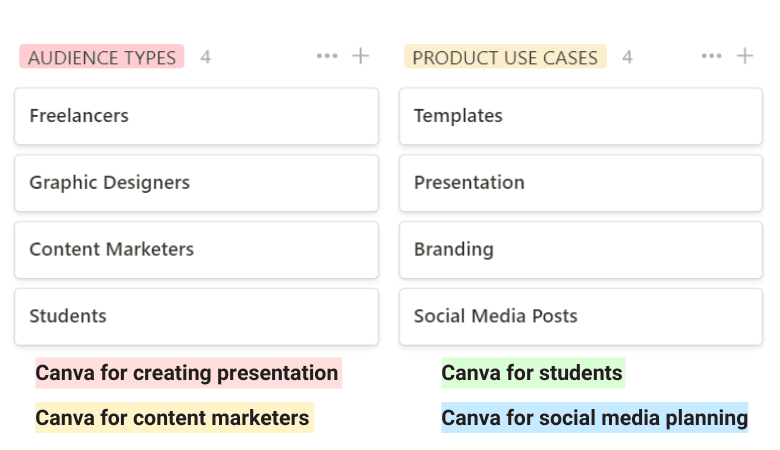Here, I’ll breakdown Notion’s strategy behind creating 10+ landing pages for the single product.
And, how you can replicate the same strategy in your business
Let’s get started.
Chances are you’ve already used Notion.
- For remote workers → Notion helps in project management and real-time collaboration.
- For managers → Notion helps in managing the team and planning people.
- For designers → Notion helps in managing the design assets.
Can you see the difference?
Notion is not meant for one specific audience, and it doesn’t only have one use case, but many.
This is kind of the same situation for almost every SaaS company.
A SaaS product has multiple use cases and can be used by multiple audience personas.
But the mistake most of the businesses make is that they don’t create enough landing pages targeting different audience profile.
Instead, they go for a one-size-fits-all approach (which means one landing page for all).
For example:
For example, if you’re selling task management software then creating one landing page for the product isn’t always enough.
Instead the same product can be turned into multiple landing pages (targeting different industry, use case, solutions, etc.) such as:
- Task management software for small startups
- Task management software for freelancers
- Task management software task for lawyers
As you can see, creating multiple landing pages for the same product will give you the opportunity to rank on multiple search queries and provide personalized content experience to different user profile.
Hence a higher chance of conversion.
Likewise, Notion has 10+ landing pages based on audience profiles, function, and even team size 👇

The Benefits?
With this approach, Notion provides a super personalized product experience to every audience category and gets SEO traffic for various search queries.
That could’ve never been possible if they had opted for a one-for-all approach.
Ultimately, higher conversion for the product.
Action Items →
1/ Create a list of audience profiles, use cases where your product can be a perfect fit.
2/ Do keyword research to prioritize the list of keywords. Get metrics like estimated traffic, search intent, etc.
3/ Create landing pages for these different profiles and use cases.
4/ Ensure that social proofs and testimonials are relevant to the specific audience. This means a page built for startup founders will have testimonials from other startup owners.
Here’s an example of finding landing page ideas for Canva:

